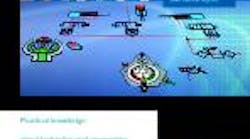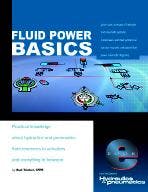Fluid Power Basics, written by industry leader Bud Trinkel, features 22 chapters discussing critical basic knowledge on fluid power technology and components, and includes key terms, graphics, and a pop quiz at the end of each chapter.
A new chapter will be available every two weeks, beginning with background information about simple air and hydraulic circuits, principles of fluid power operation, and physical laws governing fluid power. Subsequent chapters cover different types of hydraulic fluids, fluid rating, operating parameters, and how to apply them.
Future topics include plumbing fluid power systems (tubing, pipe, and hose installations), vacuum, basic circuit information, reservoirs, filters, pumps, flow meters, gauges, and relief valves.
Valves will be further discussed in chapters 9 to 14, covering the following valves: directional control, check and pre-fill, sliding plate, spool and poppet, in-line and
simple air and hydraulic circuits, principles of fluid power operation, and physical laws governing fluid power. Subsequent chapters cover different types of hydraulic fluids, fluid rating, operating parameters, and how to apply them.
Future topics include plumbing fluid power systems (tubing, pipe, and hose installations), vacuum, basic circuit information, reservoirs, filters, pumps, flow meters, gauges, and relief valves.
Valves will be further discussed in chapters 9 to 14, covering the following valves: directional control, check and pre-fill, sliding plate, spool and poppet, in-line and sub-plate mounted, screw-in and slip-in cartridge, proportional and servovalves, as well as decompression circuits.
Subsequent chapters cover flow controls and their use in a circuit, followed by explanations of pressure control, such as sequence, counterbalance, and reducing valves. Shuttle valves, quick exhaust valves, and other special-purpose valves are also explained.
The final chapters, which will be released in 2007, offer knowledge on accumulators and actuators, including cylinders, rams, motors, and rotary actuators.
Be sure to visit our e-books page to see the first chapter, Fluid Power Basics, and check back regularly to learn more each month.


